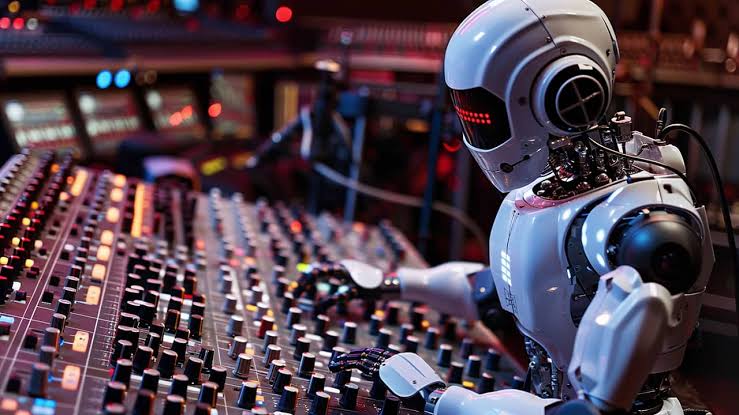The advent of artificial intelligence has transformed creative industries, and music production is no exception. Adobe, a leader in creative software, has embraced this technological wave with its innovative AI music generator, known as Project Music GenAI Control. This tool, powered by Adobe’s Firefly platform, is designed to democratize music creation, making it accessible to professionals and novices alike. By leveraging text prompts to generate and edit music, Adobe’s AI music generator offers a seamless, intuitive way to craft custom soundtracks, positioning itself as a game-changer in the music production landscape.
The Power of Project Music GenAI Control
Adobe’s AI music generator, often dubbed the “Photoshop of music,” allows users to create audio tracks from simple text descriptions. Whether it’s specifying a mood, genre, or narrative, users can input prompts like “uplifting pop anthem” or “cinematic orchestral score” to generate a musical piece tailored to their vision. This prompt-based approach eliminates the need for extensive musical knowledge or technical skills, enabling anyone to produce high-quality music in minutes. The tool’s integration with Adobe Express further enhances its accessibility, allowing users to incorporate generated tracks directly into video projects or other creative workflows.
The generative capabilities of Project Music GenAI Control are powered by Adobe’s Firefly platform, a robust AI framework known for its reliability and precision. Firefly ensures that the music produced is not only creative but also customizable, offering users the ability to refine tracks to fit specific needs. This includes adjusting tempo, intensity, or structure, as well as creating loops, extending track length, or adding fade-outs. Such flexibility makes the tool ideal for a wide range of applications, from content creation to professional music production.
Features That Redefine Music Editing
One of the standout features of Adobe’s AI music generator is its editing functionality. Users can modify generated tracks with text-based commands, allowing for precise adjustments without requiring traditional music production software. For instance, a user could instruct the tool to “increase the bass intensity” or “add a jazz-inspired bridge,” and the AI would adapt the track accordingly. This level of control is particularly valuable for creators who need music that aligns perfectly with their project’s tone or pacing.
The GenreX add-on, exclusive to Adobe Express, further enhances the generator’s versatility. It allows users to experiment with diverse musical styles, adjust vocals, or refresh existing tracks to create unique soundscapes. This feature is especially useful for branding, where businesses can craft consistent audio identities for their campaigns. By combining AI-driven generation with intuitive editing tools, Adobe ensures that users can iterate quickly, turning ideas into polished soundtracks with ease.
Applications Across Industries
Adobe’s AI music generator has far-reaching applications across various sectors. For content creators, it simplifies the process of adding royalty-free music to videos, podcasts, or social media posts. Filmmakers can use it to create custom scores that enhance the emotional impact of their scenes. Marketers can leverage the tool to produce branded audio for advertisements, ensuring a cohesive brand experience. Even educators can benefit by creating engaging background music for e-learning modules.
The tool’s ability to generate royalty-free music is a significant advantage, eliminating the need to navigate complex licensing agreements. This makes it an attractive option for small businesses or independent creators who may lack the budget for professional composers or stock music libraries. By providing a cost-effective solution, Adobe empowers a broader audience to elevate their projects with professional-grade audio.
The Future of AI Music with Adobe
While still in its experimental phase, Project Music GenAI Control hints at a promising future for AI-driven music production. Adobe’s commitment to refining this technology suggests that future iterations will offer even more advanced features, such as real-time collaboration or deeper integration with other Adobe Creative Cloud tools. As AI continues to evolve, Adobe is poised to lead the charge in making music creation more inclusive and innovative.
The potential impact of Adobe’s AI music generator extends beyond individual creators. It could reshape the music industry by enabling faster production cycles and fostering new forms of artistic expression. By lowering barriers to entry, Adobe is nurturing a new generation of music creators who can experiment freely without the constraints of traditional music production.
Conclusion
Adobe’s AI music generator, Project Music GenAI Control, represents a bold step forward in the fusion of AI and creativity. By offering a prompt-based, user-friendly platform for generating and editing music, Adobe has made music creation accessible to all. Its integration with Adobe Express, powered by the Firefly platform, ensures that users can produce high-quality, customizable tracks for a variety of purposes. As this technology continues to evolve, it promises to redefine how music is created, edited, and shared, solidifying Adobe’s role as a pioneer in the creative AI revolution.




